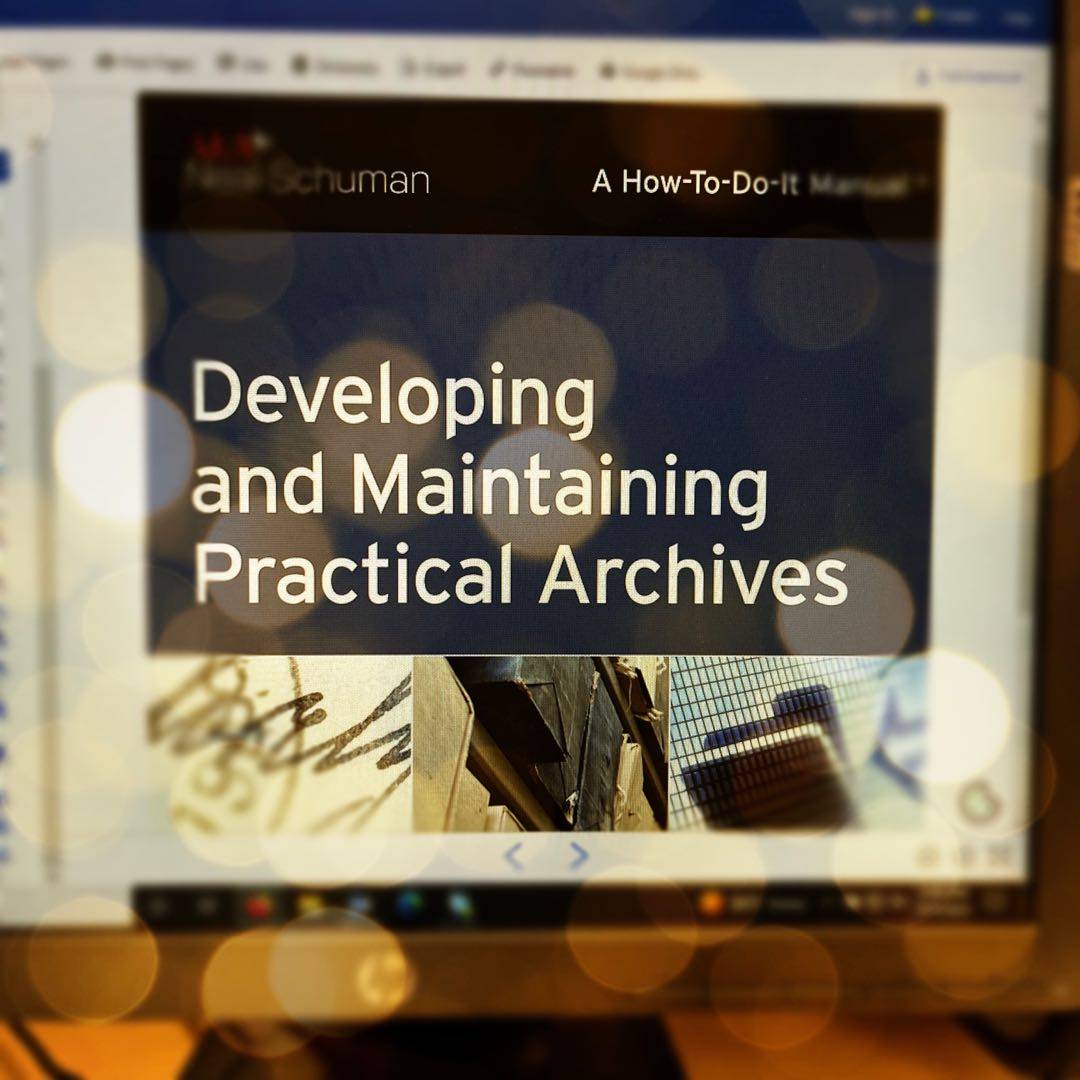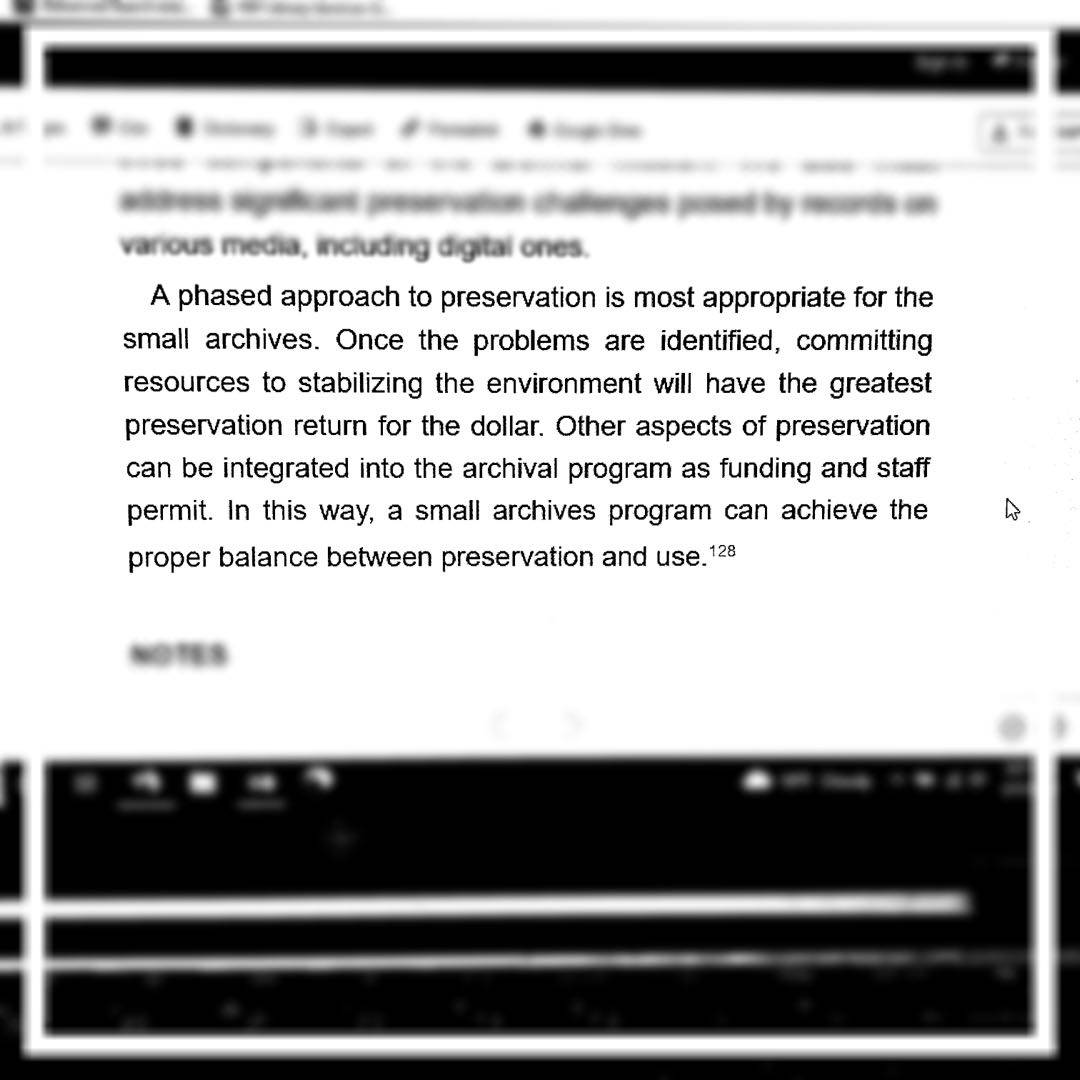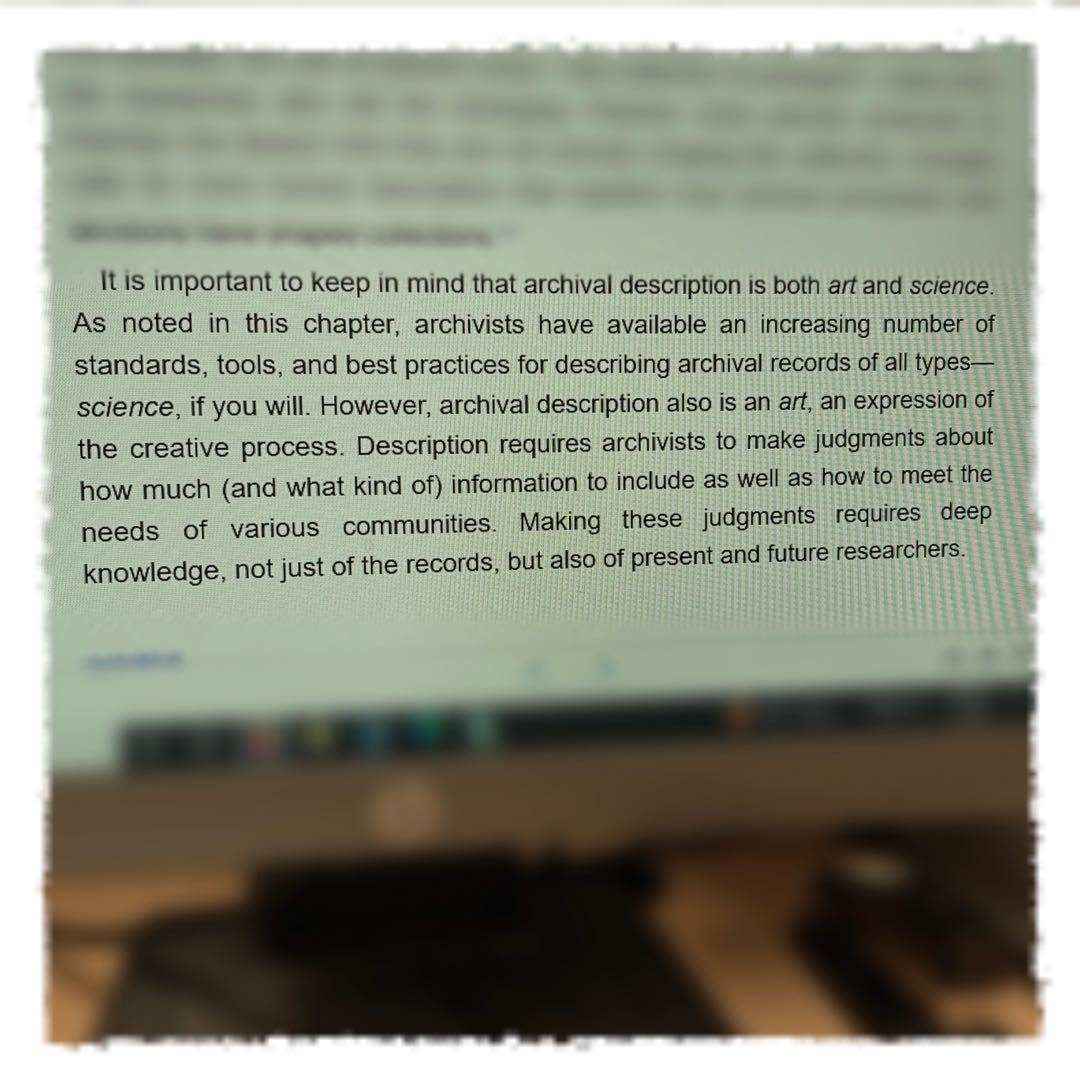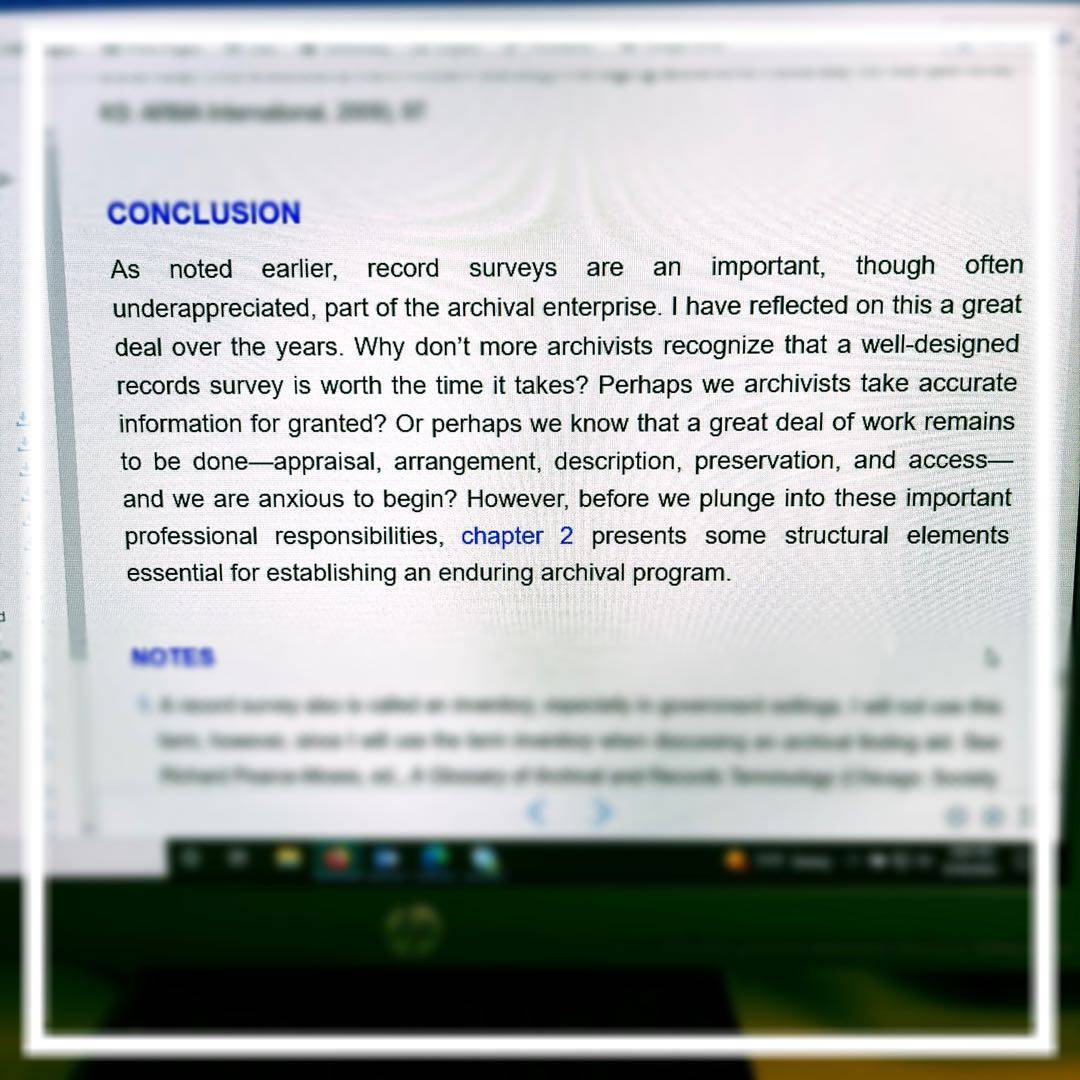
A very straightforward and approachable introduction to maintaining an archive. This is a book that I will continue to turn to as a reference.

A very straightforward and approachable introduction to maintaining an archive. This is a book that I will continue to turn to as a reference.

“Yes, archival work is challenging, but it is very rewarding. My hope is that this book will help provide you with the foundation for a successful career as a professional archivist.”
“Dearstyne stated, ‘Strong, well-led [archival] programs feature adequate support, sufficient (and rising) funding, clear direction, appropriate staffing, and secure facilities.‘ He also noted that successful programs have seven characteristics:
- clear sense of purpose and mission
- evolution and change
- dynamic, balanced expansion
- high visibility
- customer focus
- peer recognition
- professional engagement”

“. . . Detailed policies and procedures are a means for archives to keep this tension from leading to anxiety and paralysis. Policies and procedures also provide a sound foundation for the more extensive outreach, promotion, and advocacy efforts that are so necessary for archival survival. . .”

“A phased approach to preservation is most appropriate for the small archives. Once the problems are identified, committing resources to stabilizing the environment will have the greatest preservation return for the dollar. Other aspects of preservation can be integrated into the archival program as funding and staff permit. In this way, a small archives program can achieve the proper balance between preservation and use.”

“It is important to keep in mind that archival description is both art and science. . . archivists have available an increasing number of standards, tools, and best practices for describing archival records of all types - science, if you will. However, archival description also is an art, an expression of the creative process. Description requires archivists to make judgements about how much (and what kind of) information to include . . .”

“To fulfill its mandate, an archives or a manuscript repository requires focus and organization. The focus comes from a mission statement and acquisition policy. The organization comes from establishing legal, physical, and intellectual control over the materials added to the archives. Both of these elements enable an archives to begin to preserve and make available the records and papers of enduring value in its possession. . .”

“. . .record surveys are an important, though often underappreciated, part of the archival enterprise. I have reflected on this a great deal over the years. Why don‘t more archivists recognize that a well-designed records survey is worth the time it takes? Perhaps we archivists take accurate information for granted? Or perhaps we know that a great deal of work remains to be done . . .”